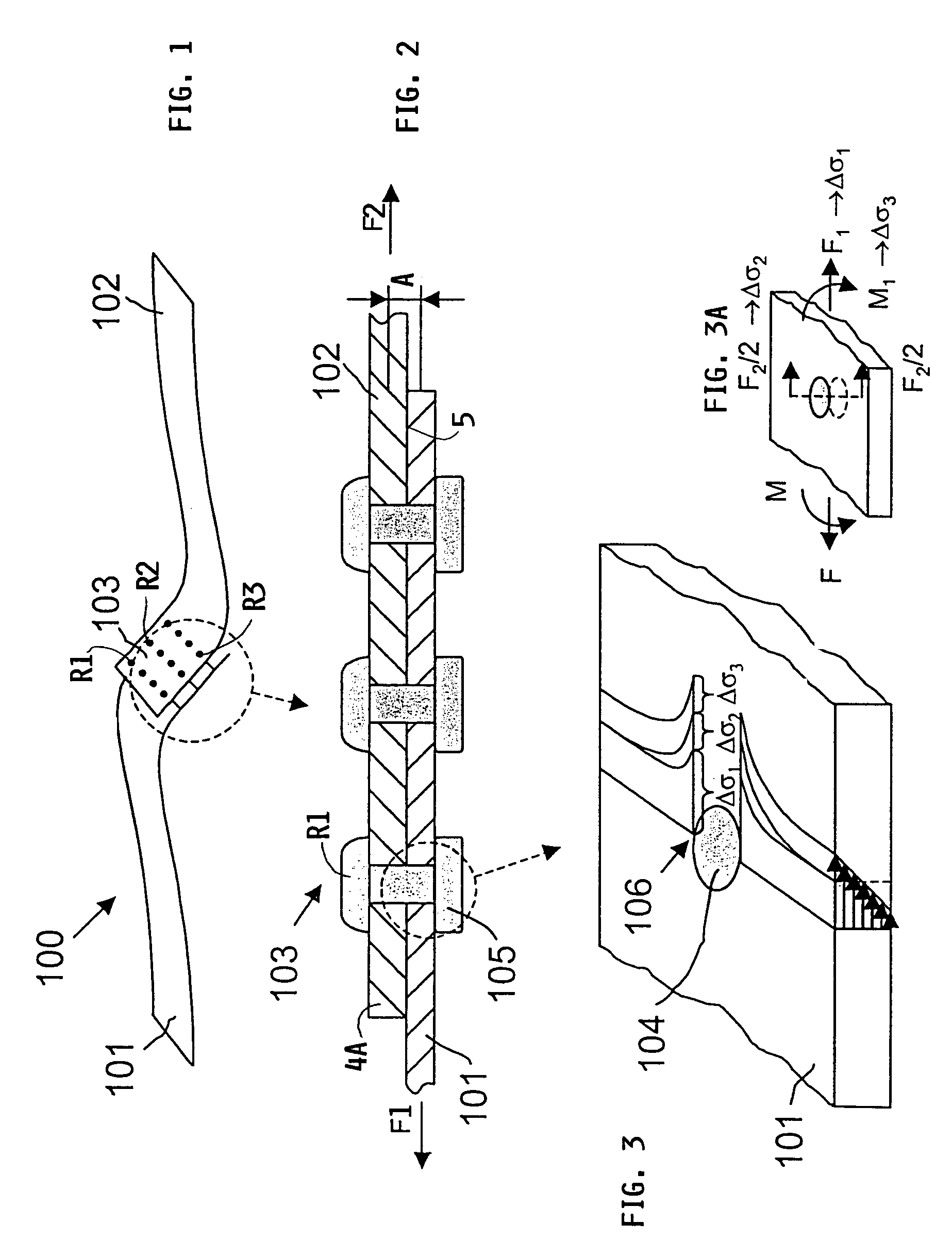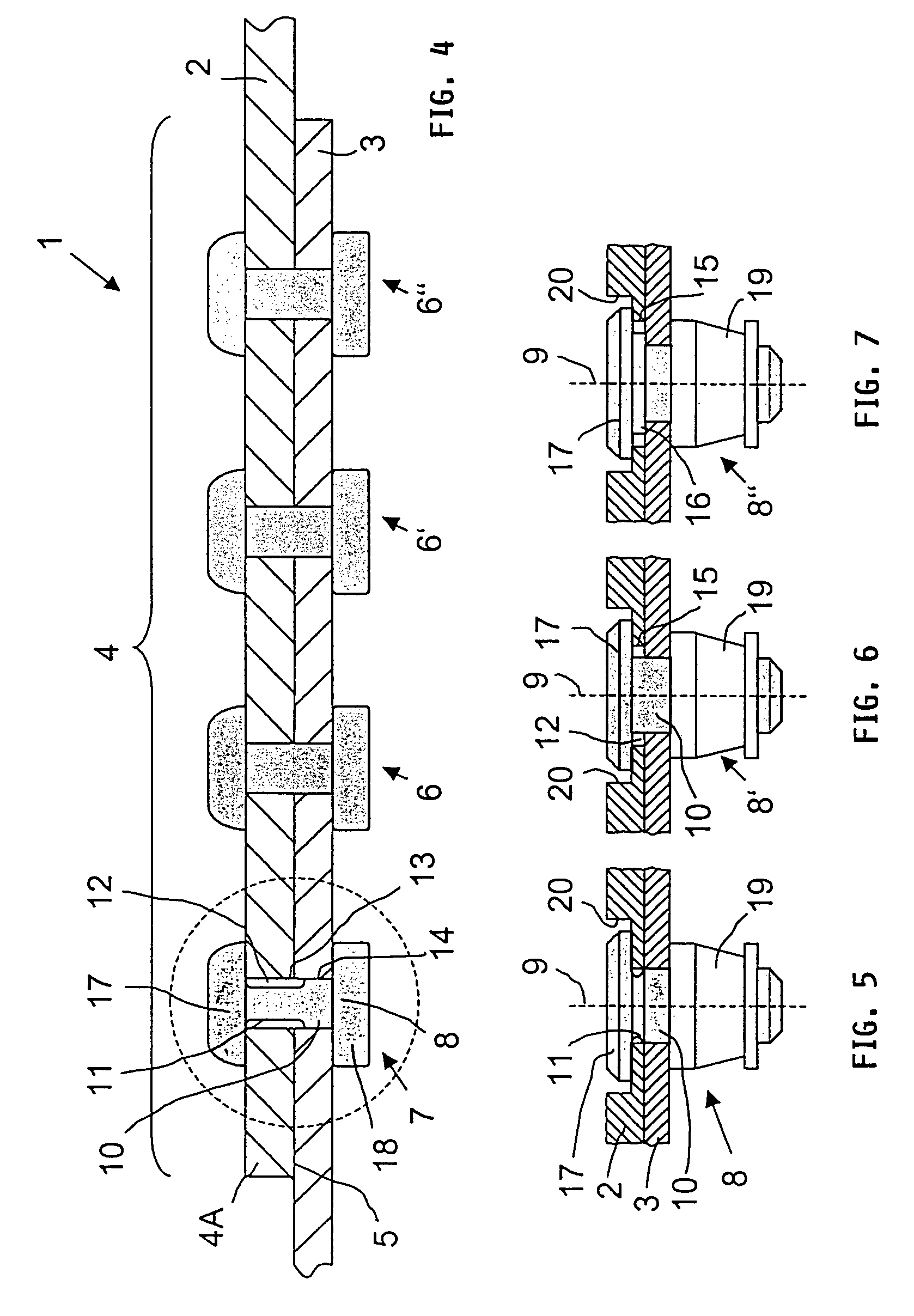Splicing for interconnected thin-walled metal structures
a thin-walled metal structure and interconnected technology, applied in the field of splicing, can solve the problems of relatively ineffective work hardening in the structure, achieve full effectiveness, reduce local effective maximum tension load, and improve flight characteristics of the aircraft
- Summary
- Abstract
- Description
- Claims
- Application Information
AI Technical Summary
Benefits of technology
Problems solved by technology
Method used
Image
Examples
Embodiment Construction
[0024]FIGS. 1 to 3 illustrate a conventional rivet splice connection between skin sections 101 and 102 of an aircraft structure 100. Three rows R1, R2 and R3 of rivets form the splice 103. During operation of an aircraft the so constructed aircraft structure 100 is exposed to a cyclical or dynamic tensional load, which causes locally a bending load which flexes the splice as shown within the dashed circle in an exaggerated manner in connection with sheet metal materials that are conventionally used for the construction, for example of an aircraft body skin. There is the potential danger of material fatigue, particularly in the splice accompanied by crack formations following by crack spreading or crack progression. Individual cracks, and particularly the interaction of a plurality of cracks causing a widespread fatigue damage may substantially reduce the strength characteristics of the aircraft structure.
[0025]Referring to FIG. 2, the bending load effective in the splice is referred...
PUM
| Property | Measurement | Unit |
|---|---|---|
| area | aaaaa | aaaaa |
| stress | aaaaa | aaaaa |
| interlocking force | aaaaa | aaaaa |
Abstract
Description
Claims
Application Information
 Login to View More
Login to View More - R&D
- Intellectual Property
- Life Sciences
- Materials
- Tech Scout
- Unparalleled Data Quality
- Higher Quality Content
- 60% Fewer Hallucinations
Browse by: Latest US Patents, China's latest patents, Technical Efficacy Thesaurus, Application Domain, Technology Topic, Popular Technical Reports.
© 2025 PatSnap. All rights reserved.Legal|Privacy policy|Modern Slavery Act Transparency Statement|Sitemap|About US| Contact US: help@patsnap.com



